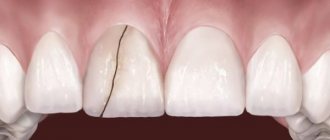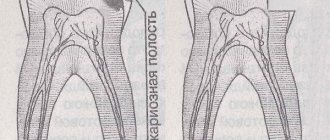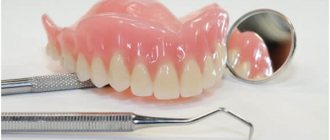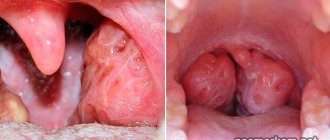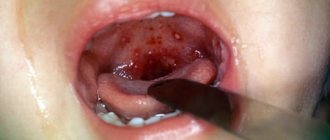Indications and benefits
Filling material can be installed if mild pain occurs and there is a large hole without caries. If intense pain develops, before the procedure it is recommended to lubricate the tooth surface with hygienic paste with the addition of fluoride. This composition can fill microcracks and also have a calming effect.
Home filling has several advantages:
- Installing a filling this way will help save money and time on going to the dentist.
- The use of medicinal drugs will help save a damaged tooth, as well as protect against infection.
- Filling at home helps to avoid stress, as some people panic when they see a drill.
However, it must be remembered that a competent assessment of dental condition is inherent only in a qualified specialist.
Other diseases
Some other diseases can also cause toothache. We list them below.
| Disease | Description |
| Sinusitis | The pain is characterized by pressing, pulsating sensations, sharp colic in the upper jaw and eye area. Without obvious injuries, the patient experiences sharp, aching and frequent pain not only in the tooth, but also in some areas of the head and face. The eyes may swell. After an examination by a dentist, a referral is given to an otolaryngologist to prescribe complex therapy. |
| Migraine | Causes pain behind the eye socket and in the upper jaw. The symptoms appear the same as with pulpitis. The attacks affect one part of the head, namely the temples and forehead. May be aggravated by harsh light or strong sound. Additional symptoms are nausea and vomiting. Not paying attention to these negative manifestations can lead to more serious consequences. |
| Trigeminal neuralgia | The affected large nerve, which is responsible for facial sensitivity, causes severe pain radiating to the face, usually from the mouth and jaw. Uncomfortable feelings appear suddenly. Even simple touches to the face awaken unpleasant sensations. A person with such problems needs the help of a neurologist. |
| Ear infection | It is similar to caries of chewing teeth. The pain is characterized by acuteness, chronicity and purulent discharge. A person has stuffy ears and pain in the temporal region. When eating food, the pain becomes stronger. The temperature also rises. The patient should be examined by an otolaryngologist. |
If a person has ear problems, they may also experience toothache
In the absence of caries and holes, the causes of toothache can be very different.
Important ! Sometimes pain has nothing to do with dental factors, but is a consequence of painful reactions developing in the human body.
Contraindications
No filling, not even a temporary one, can be placed at home if you have the following problems:
- inflammation of the pulp, that is, the dental nerve;
- pronounced pain syndrome;
- caries at any stage;
- damaged dental canal;
- other diseases of teeth and gums.
If the hole is small, a dentist must install a filling. Independent actions can lead to the penetration of food debris and the proliferation of pathogenic microorganisms in the oral cavity.
Video of how to make a filling on a tooth:
Treatment
If a person maintains oral hygiene, brushes his teeth, rinses his mouth, etc. – this will not stop the development of caries.
Pieces of food will continue to fall into cracks and holes, thereby causing putrefactive processes. Therefore, to prevent tooth decay, it is necessary to close the hole with a special dental material and strengthen the enamel coating.
Depending on the degree of development of caries, there are three types of treatment:
- For minor pigmentation, remineralizing therapy is used.
- If the enamel is damaged, restoration materials are used.
- In advanced states, caries is treated with special linings that strengthen the tooth and prevent relapse.
- Treatment of pulpitis is carried out under anesthesia. The inflamed pulp is removed, the root canals are cleaned, antibacterial treatment and filling are carried out.
- With periodontitis, the degree of neglect of the disease is determined. It depends on whether the tooth will remain in the socket or will have to be removed. If the cystic formation is small, then the source of inflammation is disinfected, and the hole is sealed with a special filling material.
According to the doctor's indications, resection is used. As a result of manipulations, the upper part of the tooth root is removed. If there is flux and a purulent focus, the tooth is completely removed.
Periodontitis is accompanied by the formation of an abscess. Therefore, the lack of treatment leads to its breakthrough. This can cause blood poisoning, which can be fatal.
The spread of infection deeper is fraught with osteomyelitis (destruction of the jaw bone).
How to fill a tooth yourself using the Tsivinsky method
It is important to know exactly how and what a filling is made of. As a classic filling, drilling is used, after which a filling is installed. Dr. Tsivinsky has created a new technique that allows the procedure in question to be performed without the use of a drill. This method helps speed up the process of tooth restoration and also eliminates the pain of this event.
Stages of filling with Santedex:
- It is necessary to thoroughly mix the dry and liquid material in the package. The result should be a clay consistency.
- Next, fill the tooth hole with the resulting medicinal mixture.
This procedure is suitable for:
- filling microcracks in the tooth;
- eliminating pain;
- providing a therapeutic effect;
- relieving enamel hypersensitivity.
Filling with Santedex can save a person from the above dental problems overnight. Using this method, you can maintain dental health permanently. The author of the technique speaks about the durability of such fillings, and also emphasizes the need and effectiveness of using medicinal powder for damaged teeth. This is due to the relief of inflammatory processes and disinfection of areas of the oral cavity due to the valuable properties of the medicine.
Stages of hole formation
The most common occurrence is the formation of a hole in a wisdom tooth. Inaccessible to cleaning with a regular brush, they become a convenient place for bacteria to accumulate. However, depressions in the enamel do not appear immediately; the last stages of caries development can be prevented if you constantly monitor the condition of your teeth. Let us briefly describe each of the progressive stages of caries development:
Initial stage: there is slight darkening on the tooth. To treat caries, it is enough to treat the affected area with a special solution, prescribe a diet, medicinal powders and toothpaste.
Superficial caries: there is slight destruction of the enamel without severe signs of pain. Slight roughness may be observed, and tooth sensitivity to cold and hot increases.
Middle stage: this is where the formation of depressions is diagnosed; not only the enamel is damaged, but also the dentin. Difficulties in brushing teeth and discomfort when eating sour, sweet or salty foods are noted. In this case, it is difficult to relieve pain even when taking analgesics.
Deep caries: the affected tooth cavity increases in size, the enamel is damaged over almost the entire area of the tooth, the dentin becomes softened. It is almost impossible to touch the tooth; there is complete damage to the neurovascular tissue.
Dental filling from Acrodent
The dental product Acrodent is used to install a permanent filling after introducing the disinfectant drug Santedex into the cavity. To carry out the procedure you should prepare:
To carry out filling at home with Acrodent, you must perform the following steps:
- Clean your mouth with a toothbrush and hygienic paste.
- Treat the tooth with a cotton swab dipped in disinfectant liquid.
- Dry the filling area with a household hairdryer.
- Apply the oxidizing agent from the package into the tooth cavity and dry the hole again.
- Place small pieces of cotton wool around the tooth.
- Prepare a medicinal mixture of dough-like consistency based on powder and oxidizing agent from Acrodent.
- Fill the bottom of the hole with a small amount of the resulting mixture using a dental spatula.
- Apply several layers of this preparation, drying each one.
It is recommended to install a homemade filling to the bottom of the tooth hole and fill the cavity completely, but not above the level of the tooth surface. This will help prevent the formation of discomfort in the oral cavity. If there is a large hole, two fillings should be made.
Prevention
Dental problems are largely caused by poor diet and insufficient oral care. Necessary preventive measures minimize the risk of wedge-shaped dental defects:
- correction of malocclusion;
- proper brushing of teeth; horizontal movements of the toothbrush are not allowed;
- proper selection of toothpaste, alternating calcined toothpastes with fluoride-containing ones;
- brushing your teeth at least half an hour after eating acidic foods, such as wine;
- timely treatment of dental diseases (gingivitis, periodontal disease, caries);
- prevention and treatment of diseases of internal organs;
- getting rid of bad habits.
Paying attention to your health and, in particular, to the condition of your teeth helps to avoid many serious problems. Even if a pathology such as a wedge-shaped defect occurs, timely measures will not allow it to develop to the middle and deep stage.
Regular painless therapeutic procedures and the use of proper toothpastes can virtually “preserve” the process of tooth deformation and preserve healthy enamel.
Expiration date, tips
In order for the filling to last for a long time, the following rules must be observed:
- If possible, exclude sweets from your diet.
- Eat food at room temperature. Excessively hot or cold foods contribute to the appearance of microcracks.
- Use a medium-hard toothbrush.
- Carry out oral hygiene procedures after every meal (even snacks).
- Use calcium and fluoride supplements to support dental health.
To clean the tooth surface, in addition to paste, it is recommended to use flosses, rinses, and irrigators with disinfecting components.
Manufacturers of preparations for home filling of dental cavities talk about the durability of the installed filling, however, in any case, you should consult a dentist for advice. This will help avoid a number of negative consequences after home filling.
Little secrets
A few interesting points that everyone who wants to have a healthy smile needs to know.
- Don't forget to brush your teeth twice a day, morning and evening.
- Throw away the old brush and replace it with a new one at least once a quarter.
- Give preference to soft and medium-hard brushes. Hard ones injure the gums and often cause bleeding.
- To make cleaning your teeth easier, buy a rounded brush with a narrow nose.
- The electric toothbrush is recognized as the best in the world, so if possible, buy one for yourself.
- You need to brush your teeth not only outside, but also inside, and also pay attention to cleaning your tongue.
- The mechanism of movement of the brush is an angle of 45 degrees, light circular movements without pressure.
- Removing plaque from the tongue helps to cope with bad breath. This should be done from base to tip, and not vice versa.
- A scheduled visit to the dentist every six months is an excellent way of prevention.
And remember that beautiful teeth are the pride of every person. But only proper care and timely treatment can give such a result.
DIY fix
Fixies are also called grillz. They are decorative onlays that are installed on one or several teeth at a time. Fixes are made from various alloys or precious metals.
In order to make grills yourself, you will need:
Manufacturing steps:
- Prepare a couple of pieces of silver or golden foil.
- Wrap the surfaces of the upper and lower dental rows alternately. The foil should fit tightly to the tooth.
- Then attach rhinestones or beads with glue.
It is not recommended to use fixations for minor children, since at this age the formation of the bite and enamel occurs.
If a filling falls out...
The most common reasons why permanent fillings fall out are:
- Continued destruction of hard tooth tissues. If during treatment the doctor left decay and infected tissues on the bottom or walls of the carious cavity, the latter serve as a source for continued tooth decay.
Tooth decay around an old filling
In order to prevent such problems during work, the dentist isolates the working area with a special rubber membrane - a rubber dam. This allows filling to be carried out in compliance with the required cleanliness and dryness.
Clean, dry and comfortable!
Where to go with a hole in a tooth in Kharkov?
If you want to quickly, painlessly and efficiently treat your teeth, we will be glad to see you at the Misto Dent dental clinic. The clinic is equipped with modern equipment, and you can undergo a full dental examination with us to identify caries and other pathologies that have harmed or may harm your teeth.
We employ experienced dentists who constantly improve their skills and use advanced technologies for dental treatment. When you turn to Misto Dent for help, you can count on accurate diagnosis of dental diseases, effective treatment of detected problems, European quality of service and a guarantee for all types of dental procedures.
| Call our phone number: 38, we will be happy to answer all your questions or schedule a consultation at a time convenient for you |
What to do if a filling falls out?
If a filling falls out, you should contact a specialist as soon as possible. If the seal was installed recently, then re-sealing during the warranty period should be done free of charge. On average, this period is one to two years and is agreed upon before the start of treatment. Typically, such situations do not require significant preparation.
If a filling that was placed a long time ago falls out, additional treatment will most likely be required. The sooner treatment is carried out, the less complex and costly it will be.
A defect along the edge of the filling leads to its loss
If a filling falls out, how can you fill the resulting defect yourself?
First of all, you should categorically refuse any glue or other restoration material available in everyday life. All such substitutes can have a toxic effect both on the tooth and on the entire body as a whole. Even if a tooth has long been depulped, prolonged contact with a toxic substance can cause undesirable effects on the surrounding tissues - gums and periodontium.
In addition, unwanted chemicals will constantly be washed out by saliva and enter the body. And in the case of a large coefficient of thermal expansion, a number of homemade fillings can simply split the tooth into pieces from the inside.
Consequences of secondary caries
If secondary caries was not diagnosed on time and treatment was not carried out, then serious complications are possible:
- the root and canals of the tooth are destroyed;
- caries spreads to adjacent, healthy teeth;
- deep layers of bone tissue are affected;
- tooth extraction due to its complete destruction.
Important! Secondary caries leads in some cases to pulp necrosis due to its severe inflammation. It is caused by the irritating, toxic effects of chemicals used in treatment or the filling material.
Traumatic exposure during the treatment and treatment of a tooth can also cause an inflammatory process.
In cases where secondary caries has led to the destruction of the canals and roots of the tooth, treatment is pointless. It is more rational to remove the diseased tooth to prevent caries from damaging neighboring teeth.
